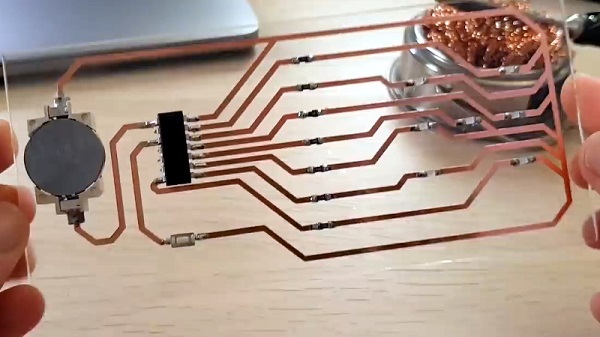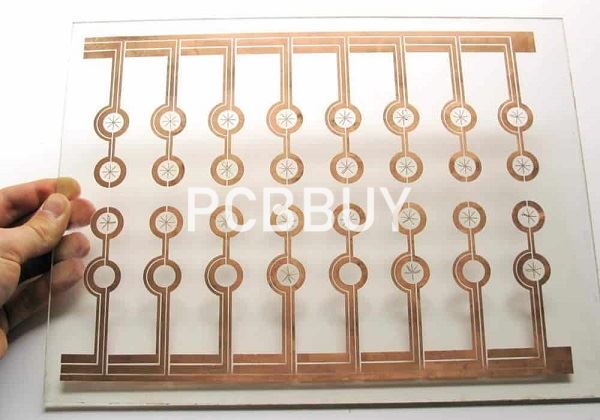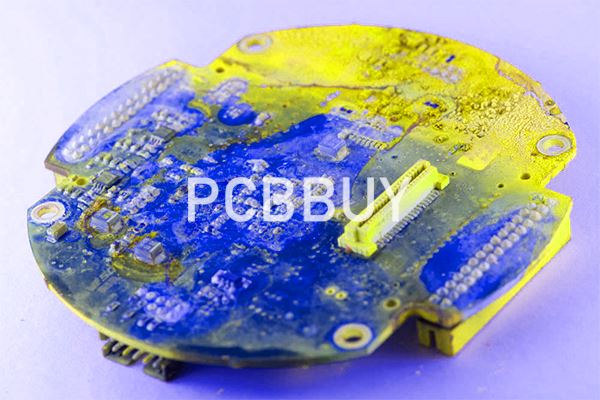What Is Glass Epoxy PCB and Why We Used It?
By:PCBBUY 12/16/2021 10:02

Glass PCB usually used in LCB, LED. We can make it with the raw material of glass. In the glass PCB, we have to transfer the circuit onto the copper board using a UV curable mask. UV curable masks provide perfect results even with narrower track widths. This is the technique utilized even in bulk PCB manufacturing.
Are you a beginner of PCB industry? Do you know what glass PCB is? If you are searching for the information of glass PCB and the application, please check and read the content below for more professional knowledge.

What is the material of glass PCB?
There is the material that we have to use to make a glass printed circuit board:
· Piece of glass, as needed
· UV photo resistance
· Baking soda
· The foil made of copper
· Chloride of iron
· Printout from OHP
· Glue
What are the benefits of glass PCB?
With the 360-degree light-emitting package and clear glass invisible wire decorating, transparent glass PCB is utilized in LED, 5G, LCD, and other applications.
The glass substrate has distinct advantages in terms of flatness, transparency, deformation, heat resistance, tear resistance, and so on; the deformation rate is very low when working at high temperatures for extended periods; the glass PCB can emit 360-degree luminescence, with an 80 color rendering index of 140lmw or more; it does not require a heat sink, and there is no light attenuation. Currently, glass PCB is extensively utilized in LED displays, solar panels, 3D printers, and other applications.
What are the considerations of producing glass PCB?
Glass is mostly made of sand, ash, limestone, and soda. These materials are recycled, which is eco-friendly. For different glass material introductions, you can click here.
But let’s take a look at the common glass materials for a brief knowledge of the transparent glass PCB.
· Tempered glass is the most common glass material you will see. It is a reprocessed and pre-stressed glass that ensures added durability. Also, it has higher impact and shock absorbing strength for extreme uses.
· Next on our list is the quartz glass. Although it has a less impact-absorbing facility, its wider use in the electrical and electronic industry makes it the most sought-after glasses. You will see the quartz glass in semiconductors, optical devices, medical and military industry, and what not! It has improved temperature resistance, chemical stability, and UV transmission.
· Sapphire glass is by far the strongest and hardest glass on the planet. Thanks to its high thermal and dielectric properties, it is used in many complicated and high-end devices. You will see its applications even in space and satellite technologies and devices.

What are the main types of glass PCB?
A wide range of materials may be used as substrates and elements for making PCBs. For example, various materials have distinct properties that enable performance in particular conditions. Let’s have a look at the types of Glass PCB.
Tempered Glass
It is a type of pre-stressed glass that is reprocessed by glass. It is highly d urable and strong; and that’s why it is tough to break. If it’s compressed to 125MPa or even more (which again is 4-5 times stronger than conventional glass), then it’s a very strong material. Furthermore, the mechanical properties are also quite good. Steel ball weighs 1kg and even if it drops from 1m height, the glass will remain unharmed or intact.
Sapphire Glass
Glass with sapphire crystals has great thermal characteristics. It also possesses outstanding electronic and structural features, and therefore is chemically inert. Infrared conductivity and extreme heat protection, as well as chemical durability, makes it an appealing material.
Quartz Glass
Crystalline quartz material is commonly used in microelectronics, electric powered light resources, advanced manufacturing as well as far-infrared radiative heaters and optical elements. It is tough to mold and seems to have a relatively low thermal coefficient. Moreover, it is extremely stable and visible to UV and infrared light.
Industry Category











